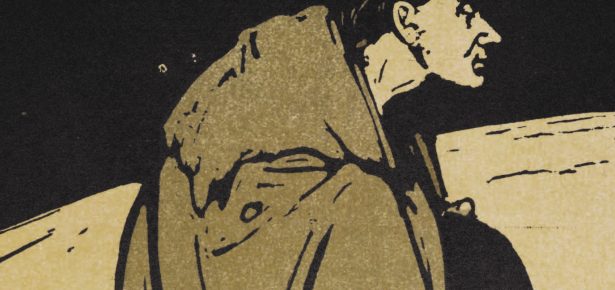
On 14 May Boris Johnson announced that preparations have been made to ship 50 ‘illegal’ immigrants from the UK to Rwanda, a country to which they have no connection. This is a cruel and baffling piece of policy, but it is not without precedent. In the late eighteenth century, Black loyalists who had fought for Britain in the American Revolutionary War found themselves destitute and often vagrant on London’s streets. These veterans became ‘a visible and persistent social problem’, as David Olusoga observes, and the solution was to transport them to Sierra Leonne.[1] In January 1787, three ships left London carrying over 400 passengers to West Africa where disease, famine and death awaited them. In the following year another fleet, also carrying England’s unwanted, arrived in Australia. These were the first convicts that Britain transported to Botany Bay, its newest (but not first) penal colony.
The homeless and the criminal, the vagrant and the convict, seem to be distinct. But like the ‘legitimate’ refugee and the ‘illegal’ immigrant of the twenty-first century, these figures easily fall into one another. This was clearly true in the eighteenth century when transportation schemes were used to deal with the destitute and criminal alike. It was also true in the Victorian period. In Charles Dickens’s novel Great Expectations, Pip’s patron Magwitch is both a convict who has been transported to Australia and a vagrant existing on the margins of society.[2] Too, he is a loyal friend, a successful businessman, an estranged father and a terrible avenger. Like the poet Walt Whitman, Magwitch might say, ‘I am large, I contain multitudes’.
The vagrant, then, is a slippery, ambiguous figure. This is true in fact and fiction and it is what I write about in Vagrancy in the Victorian Age. Here I analyse the portrayal of the vagrant in some key literary texts including H. G. Wells’s The Time Machine, Robert Louis Stevenson’s The Ebb-Tide, Charles Kingsley’s Yeast, and George Eliot’s The Mill on the Floss as well as several works by Dickens.
However, pulling against these nuanced representations is a rich and neglected catalogue of vagrant figures, and this taxonomy forms the all-important backdrop of my analysis. Through newspapers and oil paintings, photographs and magazines I trace the cultural construction of several vagrant figures through which the Victorians tried to rationalise the poor. These include the urban loafer, the English Gypsy, the casual pauper and the far-flung beachcomber of the Pacific Islands. These characters all had a distinct place within the Victorian imagination and were shaped by an evolving set of ideas about race, gender, poverty and geography. Some of these ideas were informed by eugenics and social Darwinism – the toxic dross of Victorian science – while others were informed by much older assumptions belonging to the medieval and early modern past.
Among these was the concept of the ‘deserving’ and the ‘undeserving’ poor, a potent idea that walks with us today. Along with other tired assumptions about the fraudulence, laziness and violence of poor travellers and migrants, this idea still governs our contemporary debates, not just about homelessness, but immigration as well. It is on the grounds of whether someone is ‘deserving’ that decisions are made about whether migrants will receive the right to work, the right to housing, and the right to healthcare in the UK. And on this same question also hinges the decision about whether someone who has travelled hundreds, perhaps thousands of miles to reach the UK will end up in one of its detention centres – or transported to an unfamiliar land, like Rwanda.
[1] David Olusoga, Black and British: A Forgotten History (London: Pan Books, 2017), p. 163.
[2] See Alistair Robinson, ‘Vagrant, Convict, Cannibal Chief: Abel Magwitch and the Culture of Cannibalism in Great Expectations’, Journal of Victorian Culture, 22.4 (2017), 450-64.
Latest Comments
Have your say!